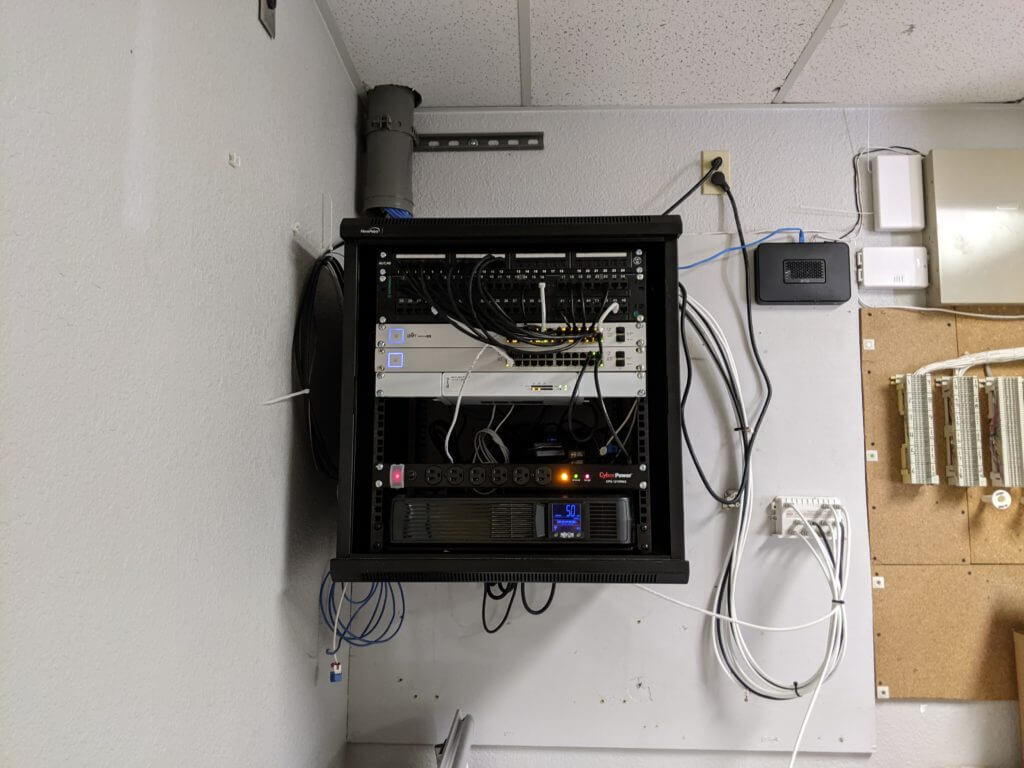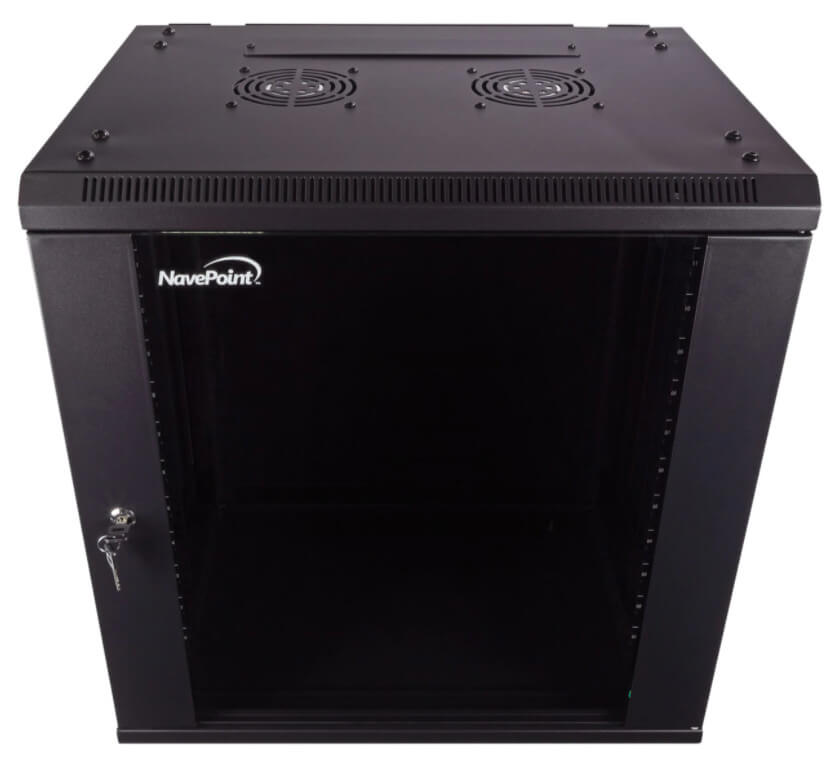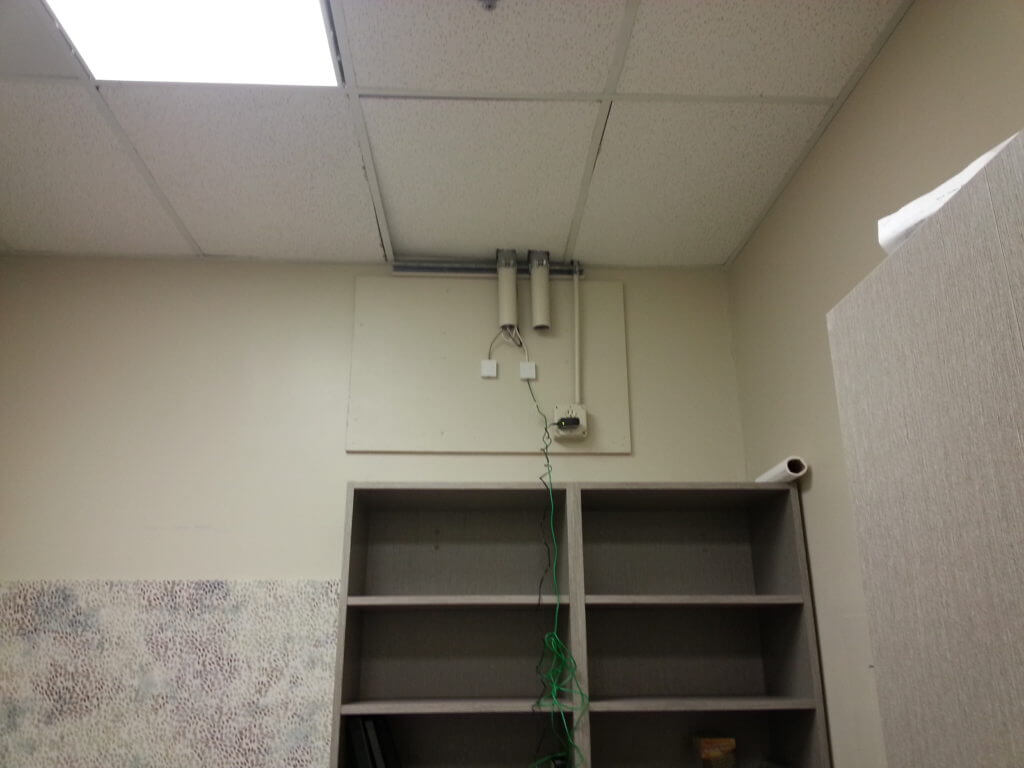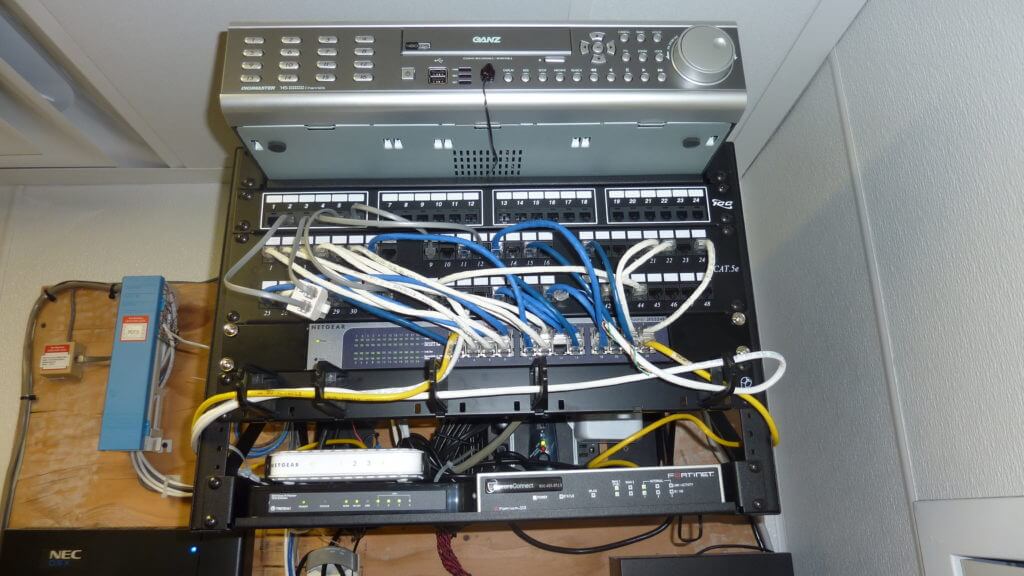In the simplest form, the location where outside telecommunications and network service providers install their equipment is called the Main Distribution Frame, or MDF for short. In the context of most small businesses this is often a small closet or area where you will see equipment mounted on a wall. Your Internet Service Provider will install the modem for your network and your phone service provider will deliver their phone lines to this location. If you are in a large building with other tenants, the MDF is actually in a different part of the building and the closet in your suite or office space is actually called an Intermediate Distribution Frame, or IDF for short.
From the MDF or IDF in your suite, network and phone cables goes out to the all the rooms and areas in the office so that you can connect computers, printers, phones, fax machines, copiers, alarm systems and all devices that communicate with other devices either through a network cable or a phone cable.
In the ideal setup, your MDF or IDF will have a dedicated network rack that include your modem, router and firewall, network switches, and various other equipment. Other important requirements for an MDF or IDF include a reliable power source. Ideally it would have dedicated power circuits for the electrical outlets.

This is a lockable network rack with the front panel door removed. Within the rack are the patch panels at the top, multiple network switches, a firewall, a rack mount surge protector, and an uninterruptable power supply, or UPS for short. The network cabling comes in through the pipe in the ceiling. A power receptacle is to the right of the rack. This rack was added recently to an existing room, often making it difficult to cleanup old cabling. To the right is legacy phone equipment that wasn’t removed. The legacy is mounted to a board that wasn’t painted prior to installation.

This how the network cabinet above would look without any equipment and the front door installed. The fact that this cabinet is lockable can be an important security feature in certain environments.

This shows a network board prior to installing any equipment. The board has a dedicated power outlet and actually 2 conduits from the ceiling. If the power outlet is installed in the ceiling, their should ideally be a dedicated conduit for power and one for other cables.. The conduits are mounted to the wall using a bracket that you can see above the board. The layout of this board is actually problematic because there is not enough space to mount a rack. At minimum the board needs a space dedicated to mounting the rack of 24″ wide by 24″ tall, depending on the size of the rack.

This is an open face network rack with a DVR camera system, patch panels, network switches, cable management, and routers. The phone and Internet provider cables come into the room on the blue block to the left of the rack. Additional phone equipment is below the rack and out of the picture.
